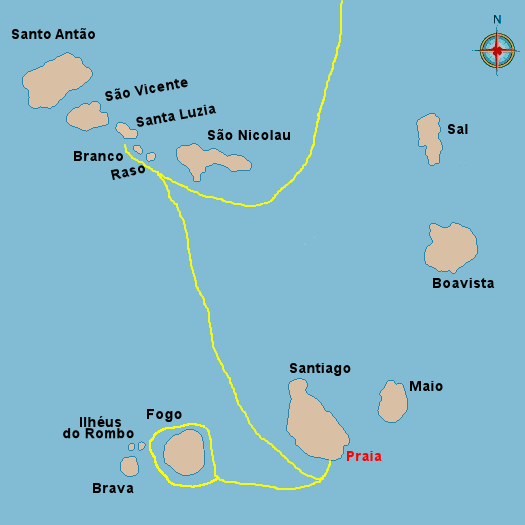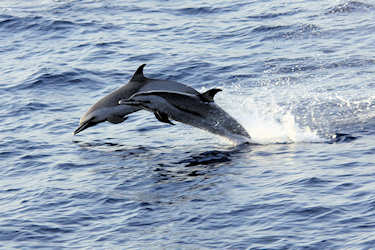Cape Verde

Historie
Cape Verde was discovered in 1456 by Luigi da Cadamosto, a navigator in the service of Portugal.
Four years later, Diogo Gomes, a Portuguese explorer, visited the uninhabited islands, and colonists from
Portugal began to settle there in 1462.
Slaves were brought here from West Africa and by the 16th century Santiago was highly successful as the
transatlantic slave trade flourished.
In 1675 the decline of the Cape Verde Islands became apparent when the Portuguese Crown agreed monopoly rights
whereby slaves could be directly bought from the coast on New Guinea bypassing Cape Verde completely.
In addition Cape Verde became increasingly vulnerable to attacks by rival countries as well as pirates. An attack in
1712 by the French led to the sacking of Santiago and robbed Ribeira Grande of its riches. The city declined in
importance and in 1770 Praia became the capital.
Cape Verde suffered rapid economic decline as the slave trade was eventually abolished in 1876.
As the 19th century approached changes started occurring, new steam ships were born as a result of the industrial
revolution and needed somewhere to stop and reload with coal on their long journeys. Due to the Islands; location,
it was the ideal place for America-bound ships to stop here for ship repairs and supplies.
Until 1879, Cape Verde was part of the Portuguese Guinea (now Guinea-Bissau) and in 1951 the status of the Islands
changed from colony to overseas province.
The affirmation of the Cape Verdean Nation happened on the 5th July 1975 (National Independence Day)
I visited Cape Verde in mei 2011.
It was the end of the Atlantic Odyssey 2011
These are the Islands i have seen
Santiago
Fogo
Brava
Ilhéus do Rombo
It was also the start of the West Africa Pelagic 2011
On that trip i have seen
Santiago
Santa Luzia
Ilhéu Branco
Ilhéu Raso
São Nicolau
Please let me know when you're having questions.
i would be pleased to help you.
Things to do and other tips
